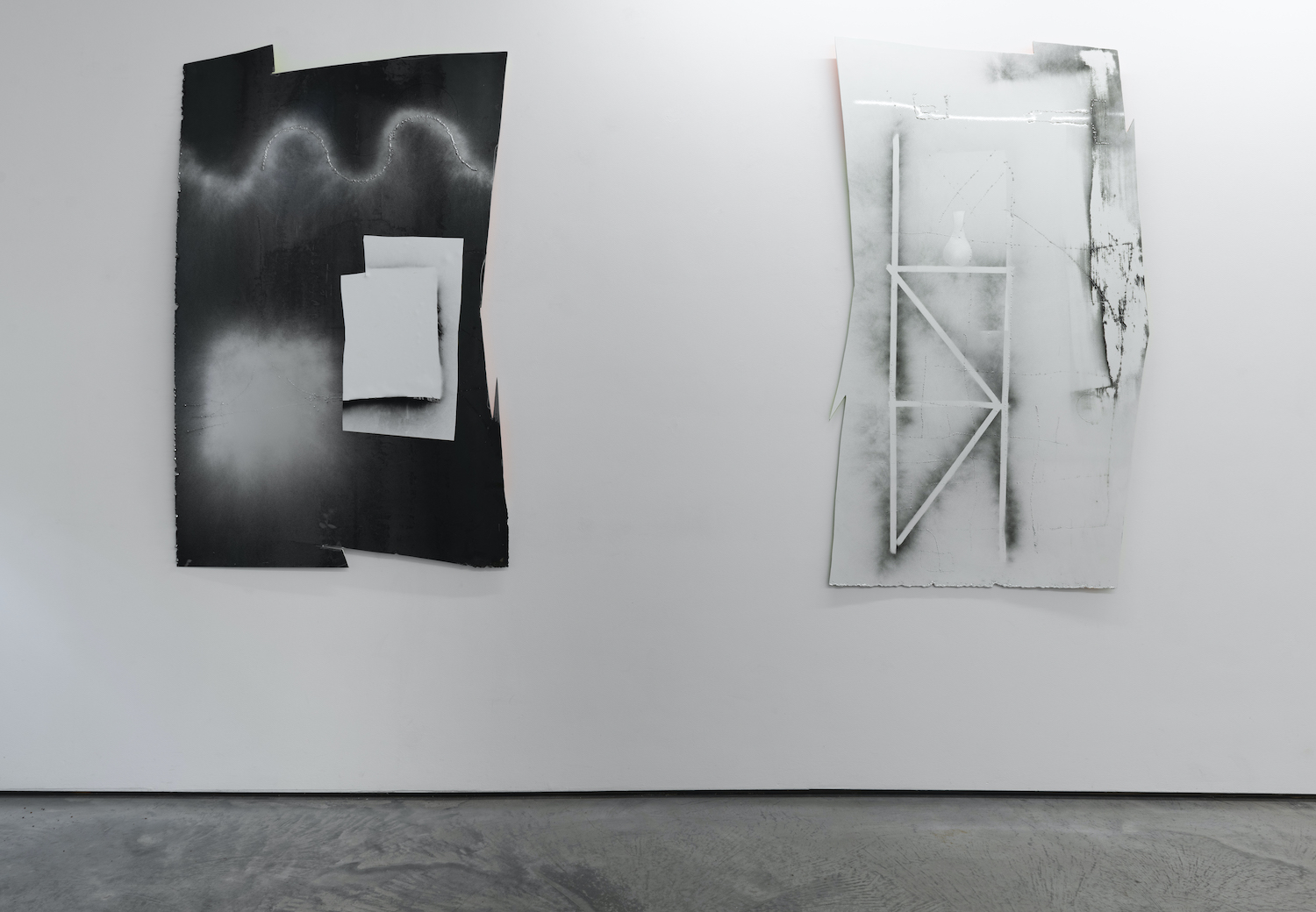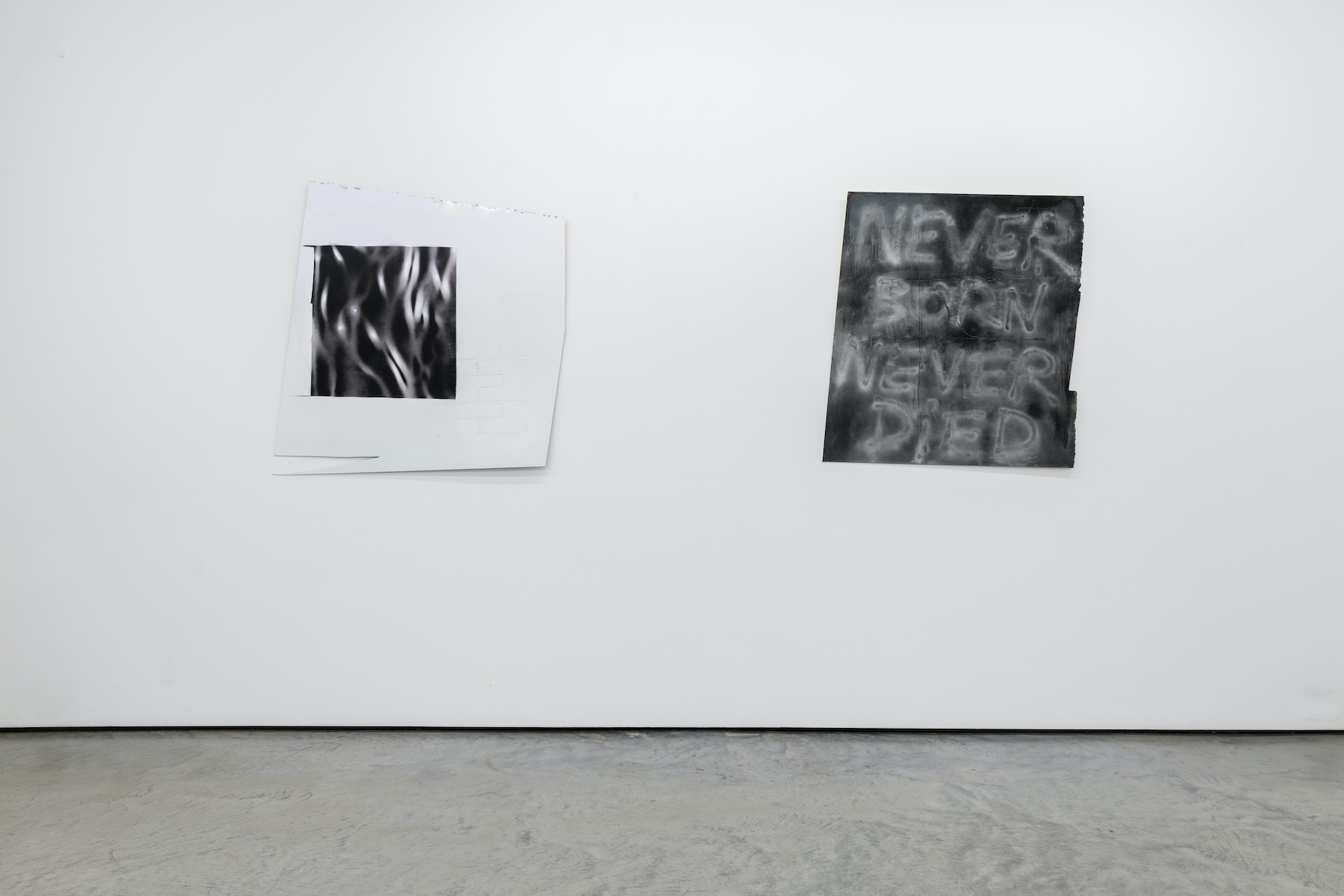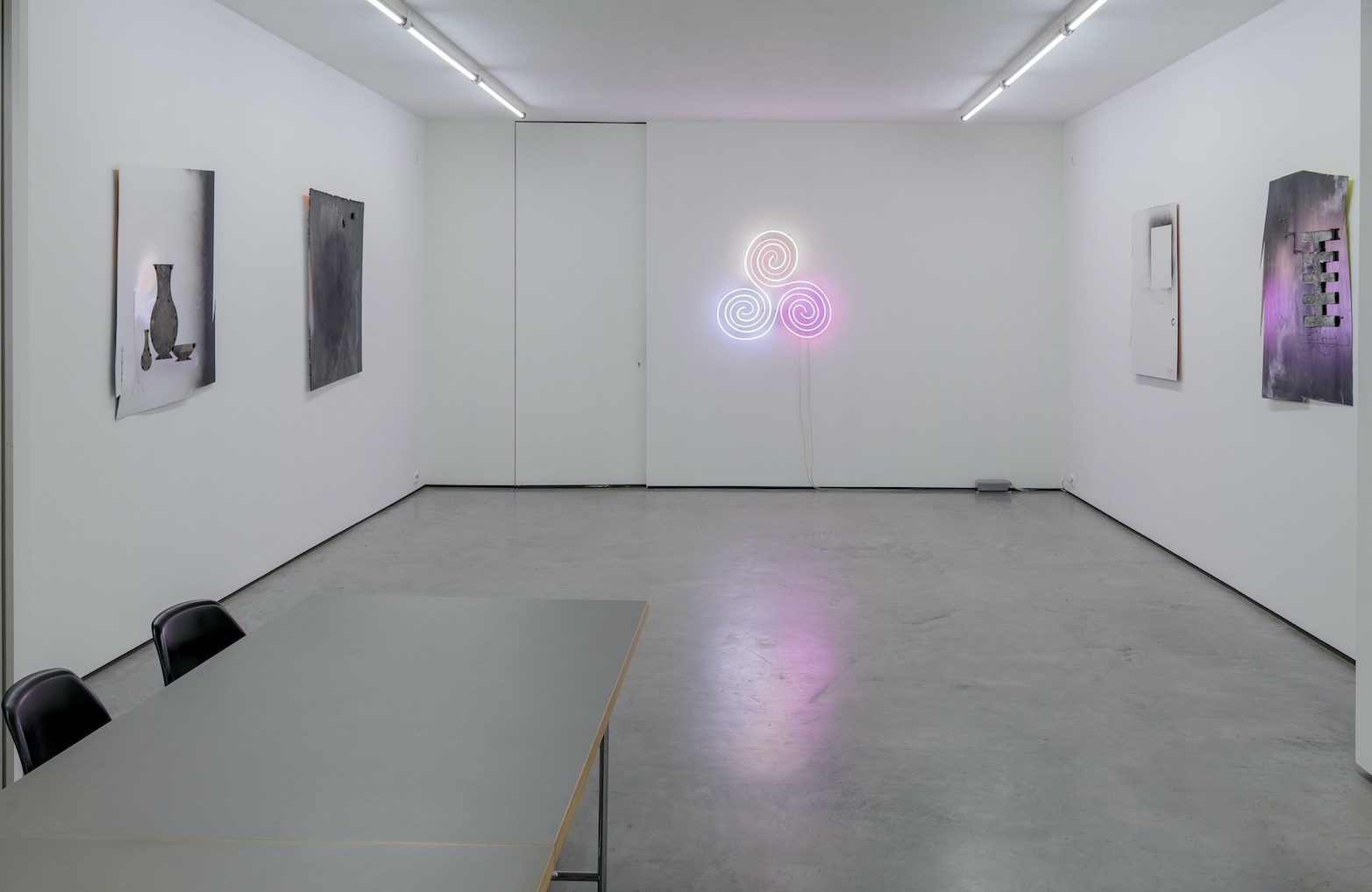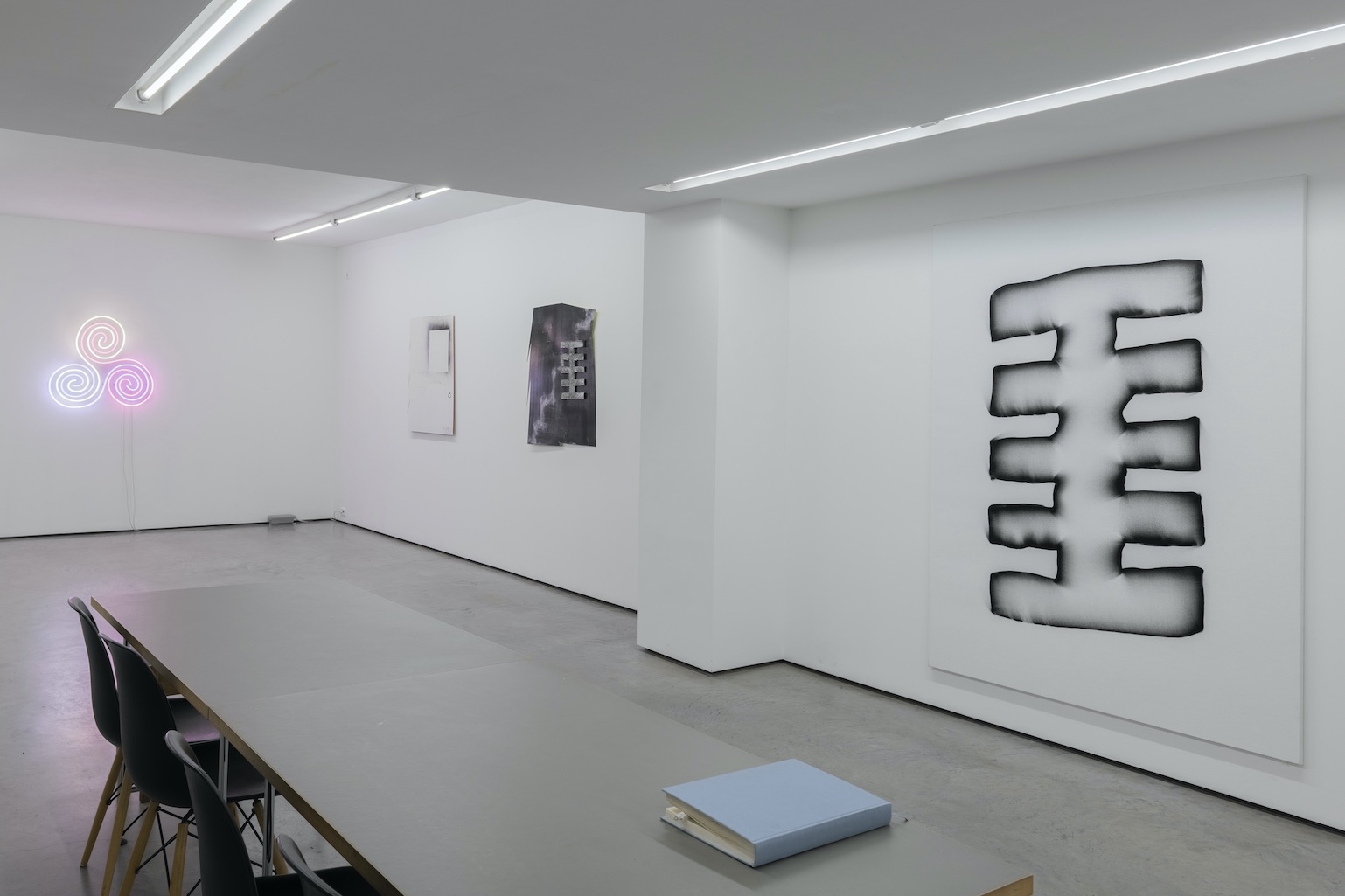























Normally he would be out walking through the fields with a metal detector, wandering in nearby woods, cycling up and down hills or exploring ghostly bunkers and caves. The verbs ‘look’ and ‘find’ characterize his daily routine. Investigating the folds of time is his tendency. Over the past year that digging into the past mainly took place in his mind. The lockdown period led almost naturally to looking back, to questions about the arsenal of symbols that inhabit his work, to questions about the meaning of those symbols in these times. In his exhibition PRIMAL / SHAPE Chaim van Luit (Heerlen, 1985) presents a series of new works that radiate magical energy: blazing images resulting from observation, memory and an intuitive approach.
One of the works in the exhibition bears the title ‘The Gathering’. The work consists of an irregular rectangle of metal, on which we see the image of a large jug – the archetypal form of a classical amphora – a smaller jug and a bowl. The depiction refers to everything that isn’t allowed during this virus age: getting together, sharing a meal, talking, laughing. While the image is inviting, it is also ‘dangerous’ due to its sharp points and edges. The associative evocation of ambiguity characterizes the conceptual basis of all the works in the exhibition. The idea of ‘bringing things together’ echoed in the title alludes, moreover, to the method of the artist, who delves into his own history like an archeologist, partly in order to raise questions about his own identity as an artist.
The ideas came about by chance: Van Luit’s young daughter liked to entertain herself during the lockdown by cutting up A4 sheets of paper. For hours on end she could be fanatically occupied with scissors, producing one irregular rectangle after the other. These had the most amazing points, edges and corners. Van Luit took some sheets of his daughter’s paper to his studio and decided to cut these forms out of metal. He then worked over the metal ‘cuttings’ with a welding machine, with spray cans, sprinkled them with magnetic iron filings, scratched Roman numerals into them or walked over them. The surface of the ‘damaged’ metal plates was then treated with iridescent paint. Once these came back to the studio, they proved to be the perfect support for visual elements that can best be described as primal forms: significant parts of the artist’s visual language, but each with its own historical, cultural connotation.
‘The Gathering’, too, took shape as such a metal ‘cutting’. The dark forms of the jugs and bowl – cut-out stencils that lay about his studio and even showed traces of his own footprints – contrast with a lighter background, bound on the right by a darkness that gently billows into the white area. Scar-like welding marks are scattered across the image. Subtly reflecting onto the wall behind the metal plate is an aura ranging from orange to yellow. In order to see all of the details, viewers need to move back and forth in front of the metal works – some of which are literally reliefs.
This new series of works deals with embracing chance and the idea of transformation. Vases become symbols of the lack of social contact but lend themselves just as easily to a changing perspective. The form of a line that twists into snake-like curves, which crops up frequently in Van Luit’s work, not only suggests time passing or seasons changing, but suddenly also evokes associations with the graph of a heartbeat, the essence of life itself. Similarly, other symbols that distinguish Van Luit’s oeuvre are charged with new meaning. This gives rise to new levels, new connections in time. The exhibition includes, in addition to the works on metal, a recent neon work consisting of three intertwined spirals, an ancient Celtic symbol. Softly merging pastel hues bring the three dimensions of time – past, present and future – into a radiant whole, a hopeful image.